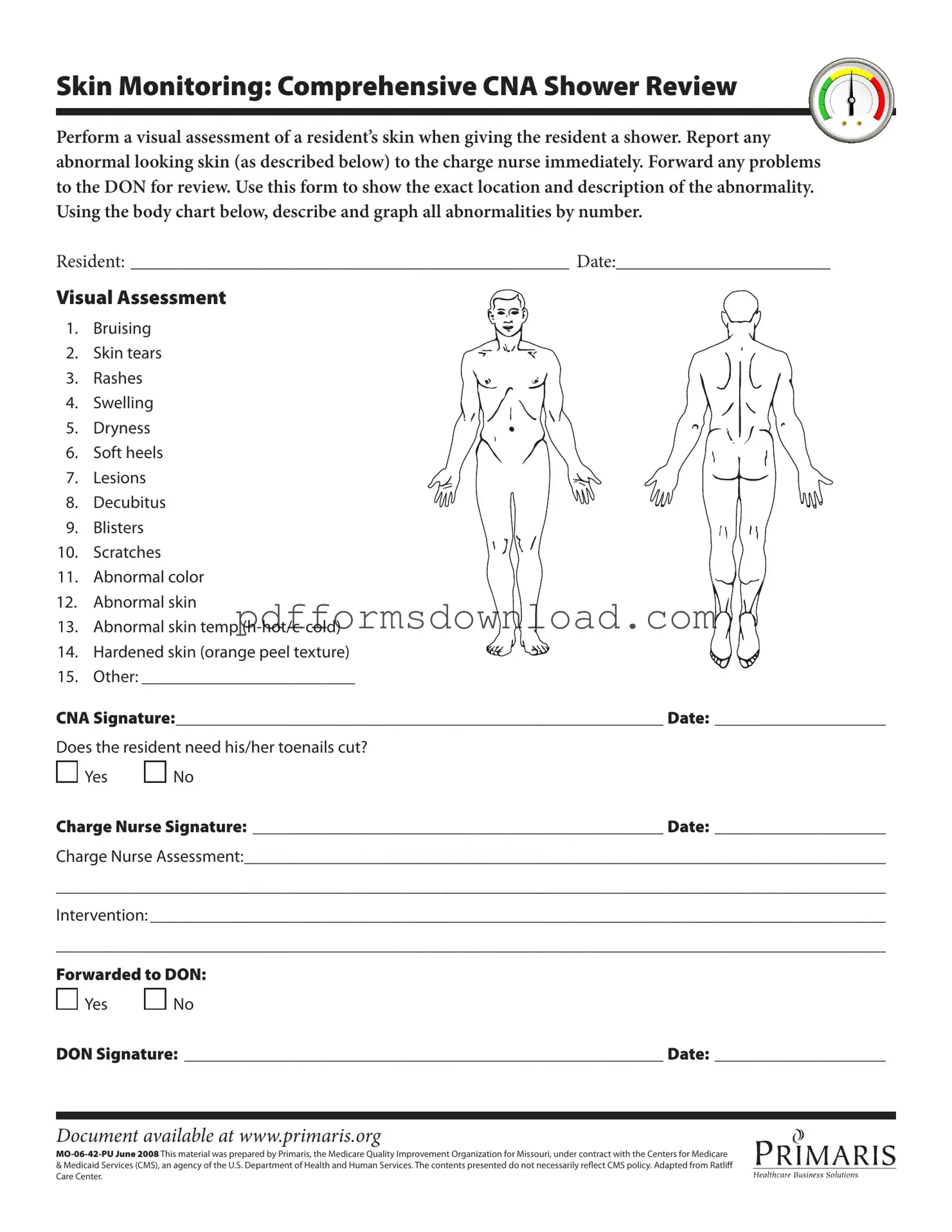What is the purpose of the CNA Shower Sheets form?
The CNA Shower Sheets form is designed to facilitate a thorough visual assessment of a resident's skin during showering. It helps Certified Nursing Assistants (CNAs) document any abnormalities they observe, such as bruising, rashes, or lesions. This documentation is crucial for ensuring that any skin issues are promptly reported to the charge nurse and subsequently reviewed by the Director of Nursing (DON).
What types of skin abnormalities should be reported?
CNAs should report a variety of skin abnormalities, including but not limited to bruising, skin tears, rashes, swelling, dryness, soft heels, lesions, decubitus ulcers, blisters, scratches, and any abnormal color or temperature of the skin. Each of these conditions can indicate different health issues, so it is essential to document and report them accurately.
How should CNAs document skin abnormalities?
CNAs should use the body chart provided on the form to graphically indicate the location of each abnormality. Each issue should be numbered according to the list on the form, and a brief description should accompany the graphical representation. This method ensures clarity and facilitates effective communication among healthcare team members.
What steps should be taken after identifying a skin abnormality?
Once a CNA identifies a skin abnormality, they must report it immediately to the charge nurse. The charge nurse will then assess the situation and determine any necessary interventions. If further review is needed, the issue will be forwarded to the DON for additional evaluation and action.
What is the significance of the charge nurse's assessment?
The charge nurse's assessment is vital as it provides a professional evaluation of the reported skin abnormalities. This assessment helps ensure that appropriate care is provided and that any necessary follow-up actions are taken. The charge nurse also signs the form to confirm their review and assessment of the situation.
What should be done if a resident needs toenail care?
If the resident requires toenail trimming, this should be noted on the form. The CNA must check the appropriate box indicating "Yes" or "No" regarding the need for toenail care. This information is important for maintaining the resident's overall hygiene and comfort.
How does the documentation process benefit residents?
Thorough documentation through the CNA Shower Sheets form directly benefits residents by ensuring that any skin issues are promptly identified and addressed. This proactive approach can prevent more serious complications, enhance the quality of care, and ultimately improve the residents' overall well-being.
Where can I find more information about the CNA Shower Sheets form?
Additional information about the CNA Shower Sheets form and its proper use can be found at the website www.primaris.org. This resource provides further details and guidance for healthcare professionals involved in resident care.
